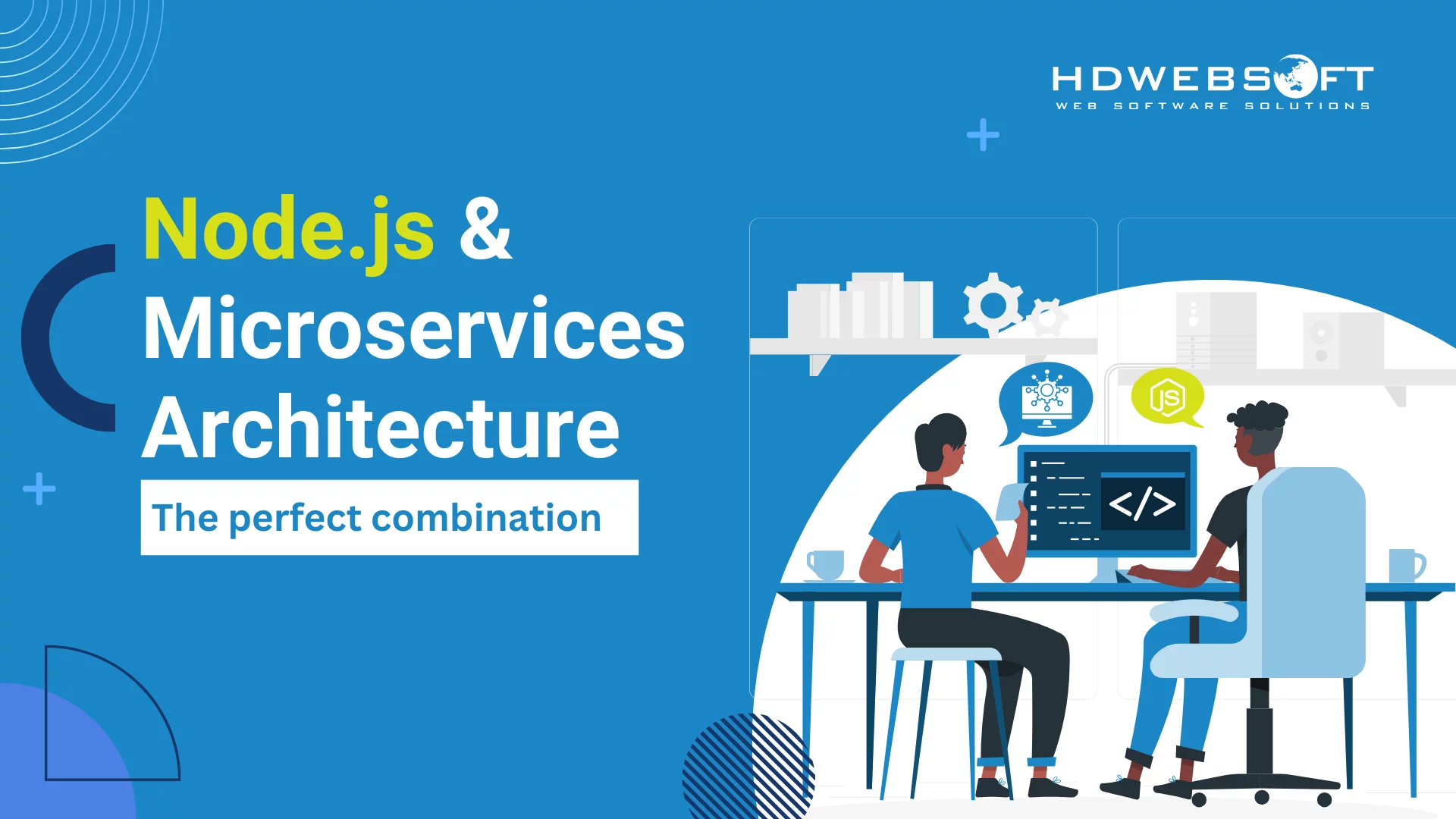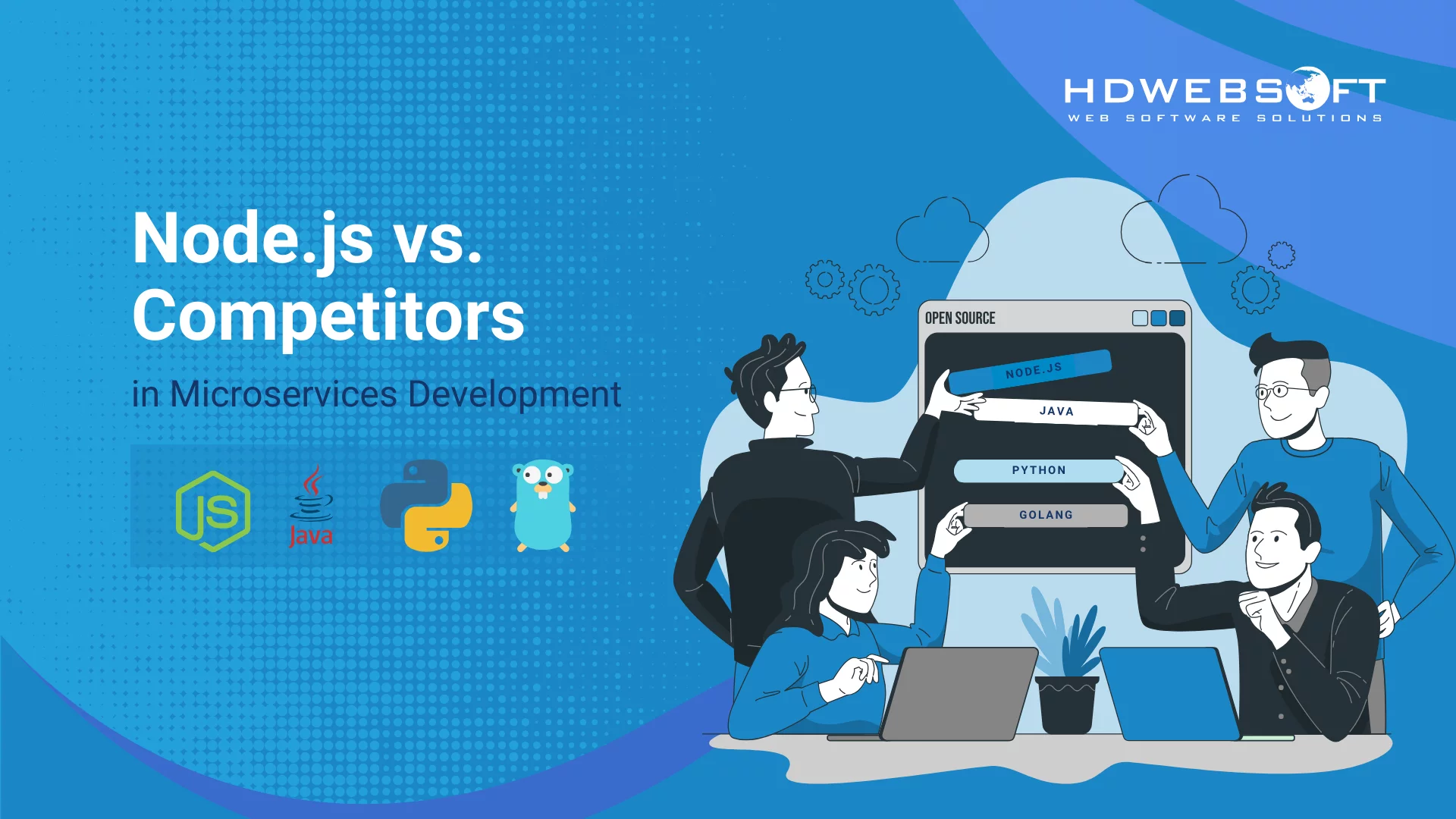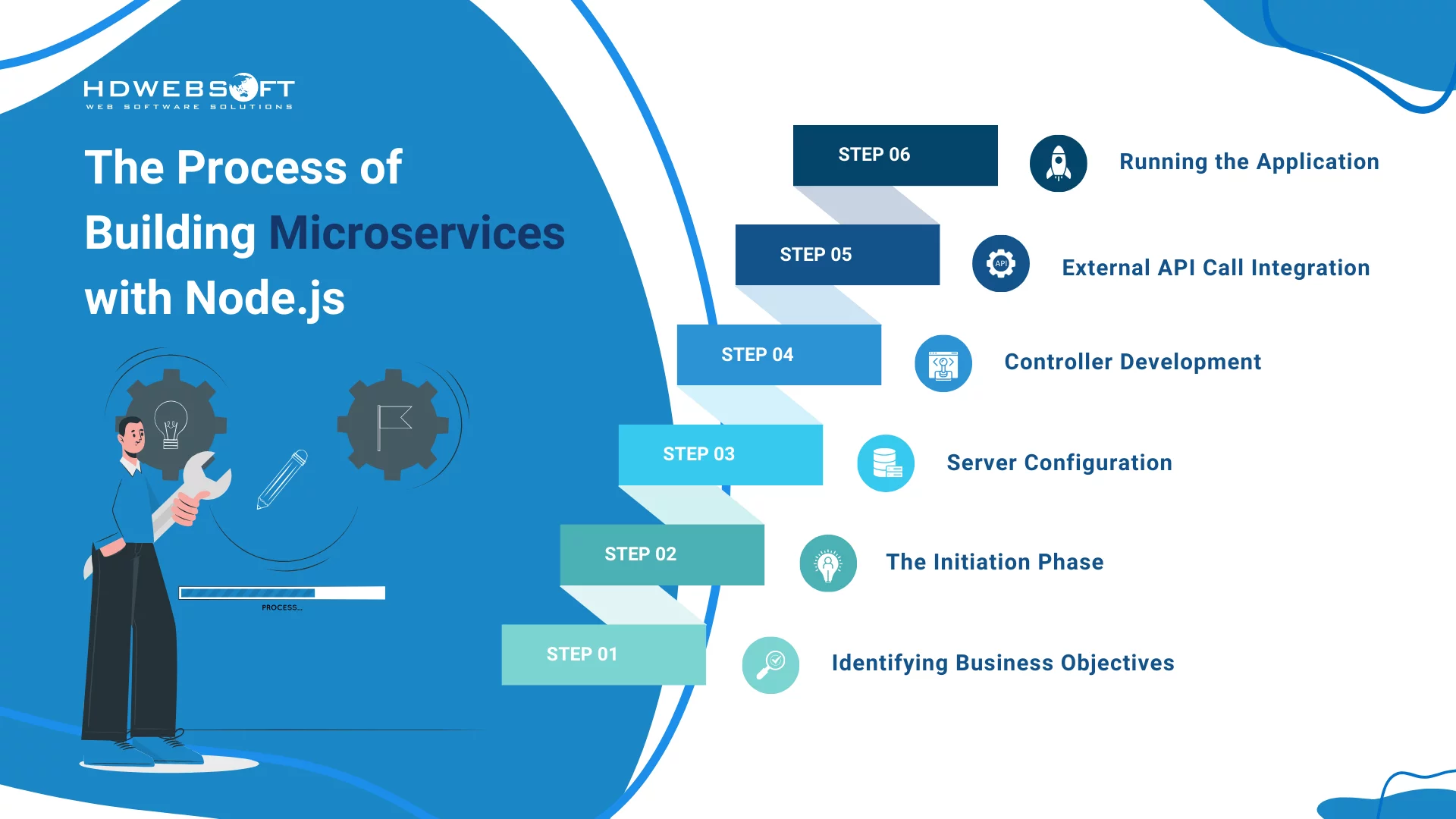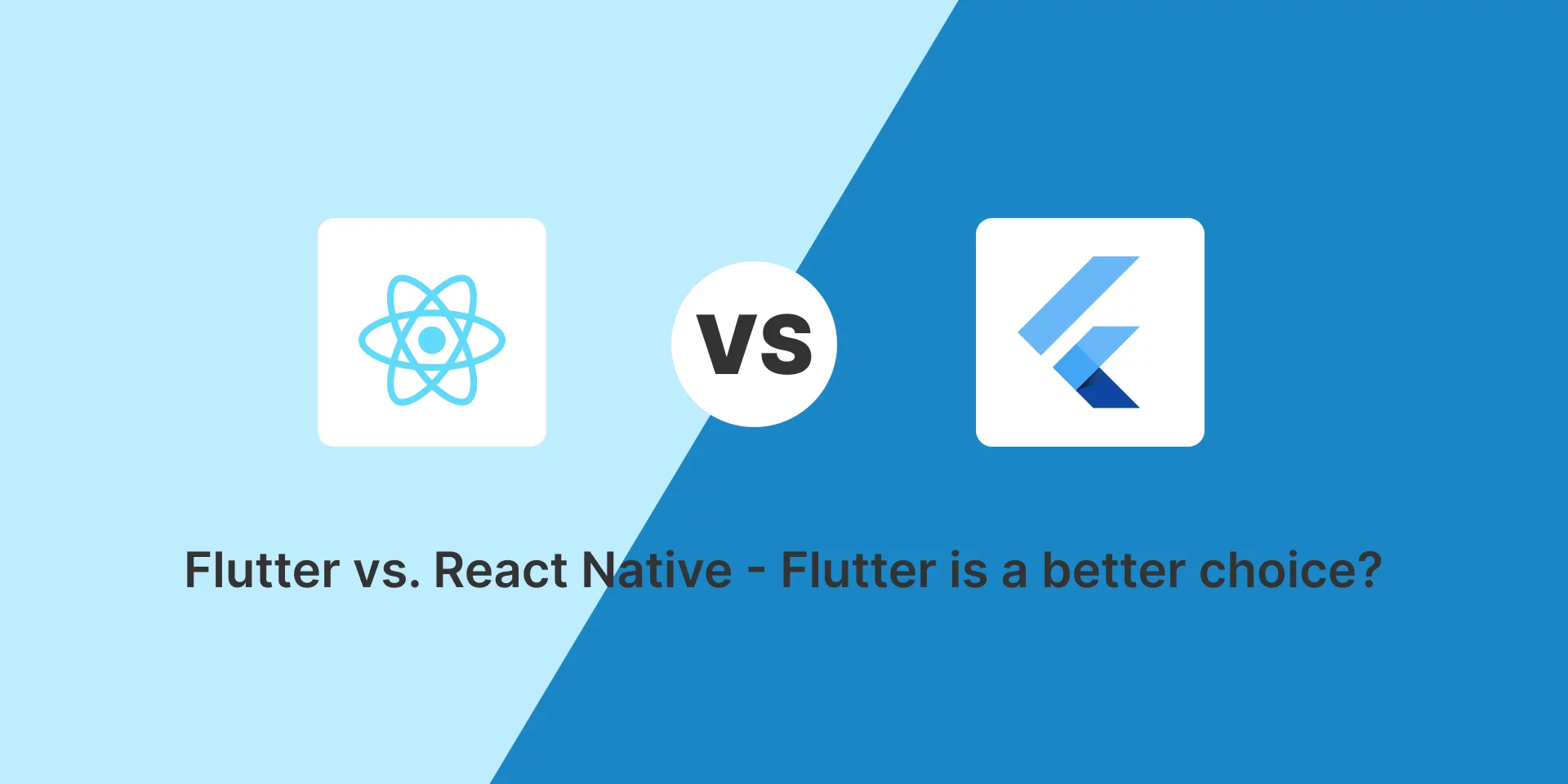
NodeJS Microservices: The Perfect Combination: Why & How?
The microservices architecture, a well-known approach in modern software development, is widely embraced to tackle the complexities of constructing large and intricate applications, aiming for enhanced agility and scalability. Node.js, particularly in conjunction with microservices, has become increasingly popular due to the rising complexity of modern applications and the demand for swift delivery.
This article explores why Node.js is an optimal solution for microservices and highlights its advantages in application development. It includes practical examples, addresses challenges, and presents case studies from diverse industries. Whether considering microservices or exploring Node.js for scalability, this post offers valuable insights. Continue reading to discover the potential of NodeJS microservices in advancing your application development.
The Rationale Behind Using Node.js for Microservices
Embracing a microservices mindset involves dismantling intricate applications into manageable, independent services. Node.js stands out for its exceptional performance and event loop architecture, optimizing development time and making it well-suited for microservices.
Widely recognized for web application development, Node.js excels in handling new features and managing high traffic. Its modular design aligns seamlessly with the microservices approach, allowing for easier maintenance, deployment, and scaling. Moreover, Node.js facilitates integration with external HTTP requests and APIs, providing an ideal environment for building microservices.
The Advantages of Node.js in a Microservices Architecture
In a microservices architecture, Node.js brings forth several advantages, making it a preferred choice for developers. These advantages contribute to the efficiency and scalability of applications. Here’s a breakdown of the key benefits:
- Event Loop Efficiency: Node.js leverages an event loop, a pivotal feature that makes it an ideal choice. This loop enables non-blocking I/O operations, ensuring the application remains responsive even under a high volume of simultaneous requests.
- V8 JavaScript Engine: Node.js utilizes the V8 JavaScript engine, known for its high-performance execution of JavaScript code. This enhances the overall speed and efficiency of microservices developed with Node.js.
- Modular Design for Microservices: Individual services are created as independent units in a microservices architecture. Node.js aligns seamlessly with this approach due to its modular design. This allows for the development of each microservice as a single unit, simplifying maintenance, deployment, and scaling processes.
- Integration Capabilities: Node.js facilitates smooth integration with external HTTP requests and APIs. This capability ensures seamless communication between microservices and other external systems, fostering a well-connected and interoperable architecture.
- Non-blocking I/O Support: Node.js supports non-blocking I/O, enabling the efficient handling of multiple operations concurrently without waiting for the completion of each request. This asynchronous programming model maximizes the utilization of system resources and enhances overall performance within the microservices architecture.
- Rich Library Ecosystem: Node.js boasts an extensive range of libraries and frameworks (Express.js, Fastify, Hapi.js, etc.). This diversity empowers developers to choose from various tools, promoting swift and efficient application development. For example, Express.js, a popular web framework for Node.js, provides a robust foundation for building RESTful APIs and handling HTTP requests, making it ideal for building microservices endpoints. The availability of such frameworks allows developers to focus on the business logic of their microservices rather than spending time on the underlying infrastructure.
- Vibrant Developer Community:Node.js has a lively and engaged developer community that consistently contributes new modules and frameworks. This ongoing collaboration ensures that Node.js remains relevant and up-to-date with emerging trends in technology, providing developers with cutting-edge tools to build scalable and robust microservices architectures.
Read more: Which Kind of Application that Nodejs is the Best Fit for?
The Drawbacks of Microservices and How Node.js Addresses Them
Implementing microservices with Node.js may pose certain challenges that need careful consideration. However, Node.js provides nuanced solutions to the multifaceted challenges of microservices architecture. Its design principles and features contribute to overcoming the specific drawbacks.
Increased Complexity of Application Components
Microservices, by their nature, can lead to increased complexity in managing various components of an application. The distributed nature of microservices often results in challenges related to deployment, monitoring, and coordination.
Node.js offers a modular architecture that aligns well with microservices. Developers can organize routes, controller files, and request packages within the root folder, providing a structured and organized approach. This helps mitigate the challenges associated with the increased complexity of managing distributed components.
Dependency Management Across Services
Microservices architecture may introduce challenges related to dependency management, with the potential for an increase in dependencies across the entire application. This can lead to issues such as version conflicts and difficulties in maintaining a consistent development environment.
Node.js addresses this challenge through a robust package management system, such as NPM (Node Package Manager). Each microservice can manage its dependencies independently, reducing the risk of conflicts. This ensures a more efficient development process by allowing services to have their own set of dependencies without affecting others.
Communication and Interaction Challenges
Microservices architecture requires careful consideration of communication and interaction between services. Coordinating actions, sharing data, and maintaining consistency across services can be challenging.
Node.js, with its lightweight and event-driven architecture, facilitates seamless communication between microservices. Asynchronous programming enables services to operate independently while efficiently sharing data. This promotes a more resilient and scalable architecture, addressing the challenges associated with communication and interaction in a microservices environment.
Is Node.js the Right Choice for Your Microservices Architecture?
When considering Node.js for your microservices architecture, it’s important to evaluate the specific needs of your software development project. Node.js excels in applications requiring high performance, scalability, and modularity. Whether building web applications, backend systems, or distributed systems, NodeJS microservices offer a powerful and versatile framework to meet your application development needs.
Factors to Consider Before Making a Decision
It is crucial to evaluate various factors that can significantly impact the effectiveness of your application development. Here are some approaches to guide your decision-making:
- System Size and Complexity Assessment: Microservices architecture is typically well-suited for large-scale applications with complex business logic and dependencies between software components. Node.js can handle the development of individual services within your architecture, enabling the modular and scalable development of the entire system.
- Business Logic and Application Requirements: Consider the nature of your business logic and the requirements of your application. Node.js excels in applications that require high performance, real-time data processing, and event-driven functionality. If your business logic aligns with these requirements, NodeJS microservices can offer significant advantages over other development options.
- Environmental Considerations: Take into account the environment in which your application will run. Node.js supports using environment variables, enabling the management of different configurations for development, testing, and production environments. This flexibility is particularly valuable in microservices architecture, as individual services may have specific configuration needs.
- Development Team Expertise and Resources: Node.js has a large and vibrant developer community, which means ample resources, documentation, and open-source libraries are available to support your microservices architecture development. If your team has experience with JavaScript or Node.js, leveraging Node.js for microservices development can be a natural choice.
Node.js vs. Competitors: A Closer Look into Microservices Development
Among the standout languages for microservices are Node.js, Python, Java, and Golang, each bringing a unique set of strengths to the forefront. The selection among them entails a meticulous assessment of the specific requirements, nature of the application you intend to develop, and priorities of the microservices project.
Node.js excels in scenarios, prioritizing event-driven architecture, speed, and a comprehensive full-stack approach. Python’s simplicity and expansive ecosystem make it a fitting choice for straightforward solutions. Java’s enterprise-level stability and scalability shine in complex and mission-critical systems. Golang, with its emphasis on concurrency and efficiency, offers a performance edge suitable for microservices on the rise.
| Pros | Cons | Solutions | |
| Node.js |
|
|
|
| Python |
|
|
|
| Java |
|
|
|
| Golang |
|
|
|
The Process of Building NodeJS Microservices
Building microservices with Node.js involves a systematic approach that ensures the development of scalable, modular, and efficient services. A well-defined process ensures the creation of a microservices architecture that delivers high performance and enables the integration of new features. The following sections will explore the key steps in building microservices with Node.js, from identifying business objectives to successfully running the application.
Identifying Business Objectives
The first step in building microservices with Node.js involves pinpointing the business objectives of the entire application. Grasping the goals, functionalities, and requirements lays the groundwork for designing the microservice architecture. This process entails scrutinizing the business logic and recognizing the crucial components to be developed as individual services. By distinctly outlining the business objectives, a focus is maintained on aligning the microservices architecture with the intended functionalities, ensuring optimal value for end-users.
The Initiation Phase
Following the identification of business objectives, the initiation phase of microservices development commences. This phase centers on the initial setup of the software application, involving the creation of a new app and the configuration of essential dependencies. The primary file of the microservice is crafted, serving as the entry point for the application. During this stage, the necessary Node.js modules and libraries are installed, ensuring access to essential dependencies. The initiation phase sets the stage for the subsequent steps in microservices development, allowing for the establishment of the application foundation.
Server Configuration
In microservices architecture, server configuration is pivotal for developing individual services. Node.js offers a versatile environment for configuring the server, enabling the management of routes, handling external dependencies, and establishing necessary environment variables. Key aspects of server configuration in microservices development include:
- Root folder: NodeJS microservices architecture allows the organization of application components within the root folder, simplifying development and maintenance for a clean and organized codebase.
- Environment variable: Node.js supports the use of environment variables, enabling configuration based on the specific environment (development, testing, production, etc.). This flexibility ensures adaptability across different contexts, promoting the smooth operation of the microservices architecture.
- Local machine: Node.js allows testing microservices locally, facilitating development and debugging. Running microservices on the local machine allows developers to iterate quickly and ensure the proper functioning of individual services.
Route Specification
In microservices development with Node.js, the specification of routes is a key step in shaping the architecture of individual services. Here are the key aspects of route specification:
- Routes module: Node.js provides the flexibility to define routes using a modular approach. A routes module can be created that encapsulates the routes for the microservice, ensuring a logical organization and separation of concerns.
- First route: Defining the first route involves specifying the endpoint and the request method (e.g., GET, POST, PUT, DELETE). This route acts as the entry point for the microservice and determines the initial interaction with external clients.
- Second route: The second route adds more depth to the microservice’s functionality, allowing developers to handle additional request methods or implement more complex logic. This route expands the capabilities of the microservice, supporting a wider range of interactions with external systems.
Route specification is a crucial part of microservices development, as it defines the API endpoints and the request-handling logic for individual services. Node.js provides a framework for efficient route specification, ensuring the seamless integration of microservices within the architecture.
Controller Development
Controller development is a fundamental step in microservices development, as it encapsulates the business logic, request processing, and response handling of individual services. Here are the key aspects of controller development in NodeJS microservices architecture:
- Controller file: In Node.js, a controller file is crafted for each microservice, housing the logic for handling requests and generating responses. This file serves as the microservice’s core, connecting the external request to the business logic and generating the appropriate response.
- Controller object: The controller file exports a controller object, encompassing callback functions for different request methods (e.g., GET, POST, PUT, DELETE). These functions are activated when the microservice receives a request, enabling the definition of logic for processing requests and generating responses.
- Callback function: The callback function within the controller object defines the business logic for the microservice. It handles the request, performs necessary operations, and generates the response based on the incoming data and the requirements of the microservice.
Controller development in NodeJS microservices architecture ensures the separation of concerns and promotes the development of clean, reusable, and testable code. By encapsulating business logic within controllers, effective management of the request-handling process is achieved, maintaining a clear architecture for the microservices.
External API Call Integration
Integrating external API calls is a common requirement in microservices architecture, as services often need to interact with external systems or access data from external sources. Node.js, with its versatile capabilities, provides efficient ways to handle external API integration. Here are the key aspects of external API call integration in NodeJS microservices architecture:
- External API: In NodeJS microservices architecture, seamless integration of external APIs empowers the incorporation of external systems’ communication, data retrieval, and actions necessary for the microservice’s functionality.
- External HTTP request: Node.js provides powerful modules, such as the ‘http’ or ‘axios’ module, that empower users to craft and dispatch HTTP requests to external APIs. These modules simplify the process of making HTTP requests, handling responses, and processing the data received from external systems.
- API key: In many cases, external APIs require authentication, typically in the form of an API key. NodeJS microservices architecture simplifies the process of integrating API keys, ensuring secure and authorized access to external services. Including the necessary API key in the request headers, query parameters, or request body is facilitated based on the API’s authentication mechanism.
By leveraging Node.js, developers can seamlessly integrate external API calls into their microservices architecture, enabling the microservices to interact with external systems, retrieve necessary data, and perform actions required for the microservice’s functionalities.
Running the Application
The next step is to run the application and ensure its proper functioning. Node.js streamlines the process of executing microservices, enabling testing, debugging, and execution of individual services. Here are the critical aspects of running the application in NodeJS microservices architecture:
- Primary file: The primary file, also known as the entry point file, serves as the starting point of the microservice. It initializes the required dependencies, sets up the server, and defines the routes for the microservice. Running the primary file launches the microservice and enables the execution of business logic in response to incoming requests.
- New object: Upon running the microservice, a new object is created based on the primary file, which represents the microservice instance. This object facilitates communication with the external environment, handles the request, and generates the response based on the defined business logic.
- Local machine: Node.js enables running microservices on the local system, creating a development environment for testing and debugging. Executing the microservice locally allows validating functionality, inspecting responses, and ensuring the proper handling of incoming requests.
Running the application is a critical step in the microservices development process, as it allows developers to verify the functionality of individual services, test the integration with external systems, and ensure the overall performance of the microservices architecture.
Conclusion
In conclusion, Node.js and microservices architecture make a perfect combination for building scalable and efficient applications. Node.js offers several advantages in a microservices environment, such as its non-blocking I/O model, lightweight nature, and easy scalability. It also addresses the drawbacks of microservices, such as increased complexity, by providing a modular and decentralized approach to development. However, before choosing Node.js for your microservices architecture, consider factors like team expertise, project requirements, and compatibility with other technologies.
If you’re craving technological advancement and eager to harness the advantages of NodeJS microservices, seize the opportunity now! Reach out to HDWEBSOFT immediately to hire our skilled Node.js developers. Don’t let your competitors outpace you – contact our experts today and stay ahead in the game!













